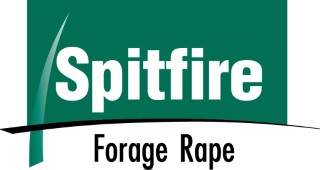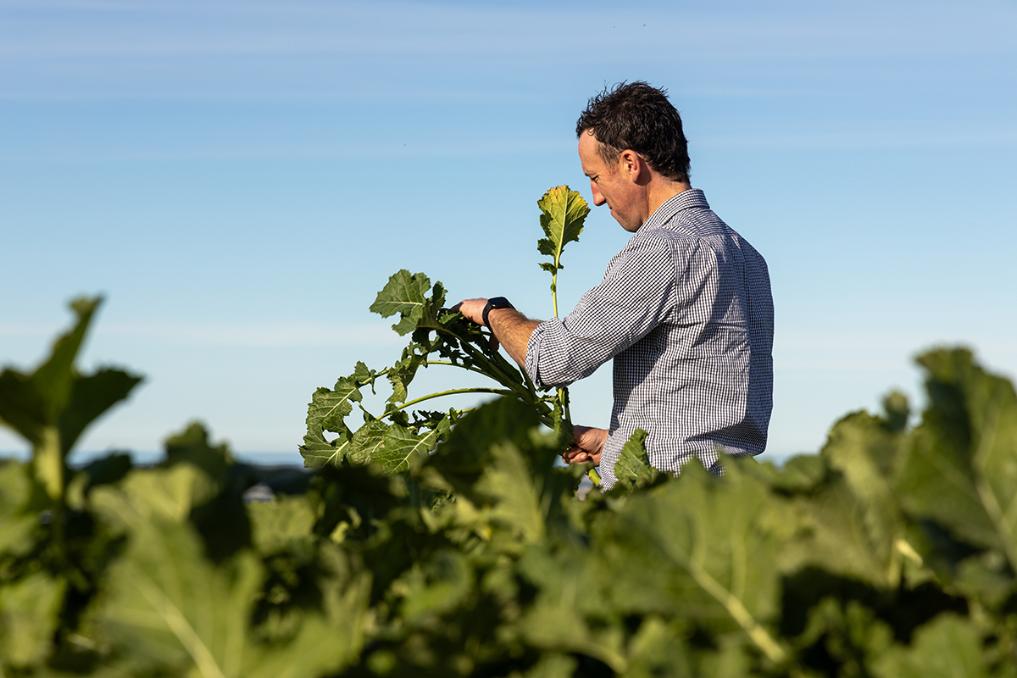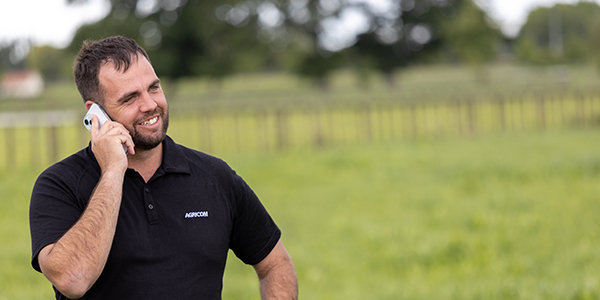Spitfire
EXCELLENT YIELD AND INSECT TOLERANCE.

- Sowing Time Mid-October to early November, Late January to early March
- Grazing Seasons Autumn, Winter
Spitfire is a modern multi-purpose rape that can be sown in spring for lamb or for cattle finishing or summer dairy grazing, or sown in mid summer to early autumn for autumn and winter grazing.
- High yielding, intermediate-height rape
- Low stem DM% and a plant maturity of 13-14 weeks
- Suitable for summer, autumn and early winter feeding
- Excellent aphid tolerance
Spitfire is an intermediate-height rape with a 90-100 day maturity that has excellent yield at first grazing and Spitfire is characterised by three key features; it has excellent aphid tolerance for a rape and has an unusually low stem drymatter (DM %). This characteristic is so pronounced that you can break the stem of Spitfire `close to the ground by hand, with most other rapes you would need a pocket knife to do this. Thirdly, when Spitfire goes to seed it has a pale yellow flower unlike the bright yellow flowers found on traditional rapes.
If using cattle to graze spring sown Spitfire, plan for a single graze as the treading of cattle can reduce regrowth ability. With sheep, plan for at least two grazings, as a third summer grazing may not always occur. If more than two summer grazings are required then Winfred is the better option, especially with cattle.
Discover how Spitfire delivers high-quality feed through both summer and winter on The Al & Juddy Show podcast, or check out more Seed Dating episodes here.

Sowing & Establishment
| Suggested Sowing Time | Suggested Sowing Rate (kg/ha) | Time to First Grazing | Number of Potential Grazings | Potential Yield (t DM/ha) |
|---|---|---|---|---|
| Mid October to early November | 3-4 alone, 3 with Relish, Sensation, Tonic or Choice. 1-2 with short term ryegrass | 13-14 weeks | 1-2 | 1st grazing 6-9, 11-13 total* |
| Late January to early March | 3-4 alone, 2 short term ryegrass | 13 weeks | 1 | 6 - 9 depending on sowing date |
*Depending on number of grazings
Key Tips
- Grazing stem to the desired level at first grazing is essential as it will never be at a higher quality or easier to graze than at first grazing
- Graze Spitfire down removing the leaf and stem to at least a 30 cm stalk residual, this will optimise animal intake and performance per hectare while ensuring plant survival for future drymatter production
- Spitfire can be sown with other species such as Tonic plantain, Relish red clover and Asset Italian ryegrass however the higher the yield potential from the paddock at first grazing the more variable the result will be, e.g. this is very successful where the conditions may lead to a lower yielding rape crop
Performance Data
Stem Drymatter Percentage
A unique feature of Spitfire is that it has a lower stem DM% than the majority of rapes available, this may lead to better utilisation and/or animal performance. Pleasingly, the low DM% does not limit its yield ability or its regrowth potential. However there is some evidence of the soft stems of Spitfire breaking off at ground level from treading, with a subsequent reduction in plant population this may reduce yield from regrowth.



Read a case study on Spitfire
Spitfire Case Study
